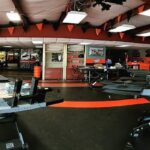Auto repair centers are essential for keeping our vehicles running smoothly, but they also generate various types of waste, some of which are hazardous. Understanding what constitutes hazardous waste in these environments is crucial for environmental responsibility and legal compliance. Improper handling of these materials can pose significant risks to both human health and the environment. It’s the responsibility of every auto repair shop to correctly identify, manage, and dispose of hazardous waste according to regulations.
To ensure your auto repair shop operates responsibly, it’s vital to be aware of the common hazardous wastes produced. Here’s a breakdown of what you need to know.
Common Hazardous Wastes in Car Repair Shops
Many everyday operations in auto repair shops result in the creation of hazardous waste. These materials require careful management and cannot be simply thrown in the regular trash or poured down the drain. Here are some of the most frequently encountered hazardous wastes:
- Antifreeze: Used antifreeze is highly toxic and can contaminate water sources and harm wildlife.
- Solvents and Cleaners: This category includes carburetor cleaners, brake cleaners, and various degreasers. These often contain volatile organic compounds (VOCs) and other harmful chemicals.
- Paint Waste: Waste paint, paint thinners, and solvents used in painting operations are considered hazardous due to their chemical composition and flammability. This also includes Paint Spray Booth Filters that capture paint overspray.
- Parts Washer Solvents: Machines used to clean auto parts often utilize solvents that become contaminated with grease, oil, and heavy metals over time, making them hazardous waste.
- Shop Towels: Soiled shop towels that have been used to wipe up solvents, paints, oils, or other hazardous materials can also be classified as hazardous waste depending on the contaminant.
- Spray Cabinet Wash Water and Sludge: Similar to parts washers, spray cabinets used for cleaning can generate contaminated wastewater and sludge that require proper disposal.
- Sump Sludges: Floor drains in auto shops can collect various hazardous materials, leading to contaminated sump sludges that must be managed as hazardous waste.
- Fuel Filters: These filters, once removed from vehicles, often contain residual fuel and contaminants, classifying them as hazardous waste.
- Hot Tank Solution: Solutions used in hot tanks for cleaning engine parts are typically caustic and become contaminated with heavy metals and other pollutants, making them hazardous.
- Floor Cleaning Wastewater: Wastewater from cleaning shop floors can contain oils, grease, solvents, and heavy metals, requiring proper treatment and disposal.
Used Oil: A Significant Waste Stream
Used oil is another major category of waste generated in car repair centers. While it can be recycled, improper disposal is harmful and often regulated differently from other hazardous wastes. Common examples of used oil in auto shops include:
- Brake Fluid: Although essential for vehicle safety, brake fluid is hazardous and must be handled carefully.
- Power Steering Fluid: Similar to brake fluid, power steering fluid is also considered used oil when drained from vehicles.
- Transmission Fluid: Changing transmission fluid is a routine maintenance task that results in used oil requiring proper management.
- Semi-solid lubricants: This includes used gear, chain, and ball bearing lubricants, which also fall under the category of used oil.
- Transmission Filters: Along with the fluid, transmission filters themselves are often considered used oil waste due to contamination.
Universal Waste Considerations
Beyond hazardous waste and used oil, there’s a category known as “universal waste,” which simplifies the management of certain common hazardous wastes. In auto repair shops, universal waste typically includes:
- Aerosol Spray Cans: Many products used in auto repair, like lubricants, paints, and cleaners, come in aerosol cans. Empty or partially full aerosol cans may be regulated as universal waste.
- Fluorescent Lamps: Fluorescent bulbs and tubes contain mercury and are classified as universal waste.
- Lead Acid Batteries: Vehicle batteries are a significant source of lead and acid, making them universal waste requiring specific recycling or disposal methods.
- Mercury Switches: Older vehicles often contain mercury switches, particularly in convenience lighting and anti-lock braking systems. These switches must be carefully removed and managed as universal waste due to mercury content.
Responsible Waste Management is Key
Identifying the types of hazardous waste present in your car repair center is just the first step. Implementing best practices for storage, handling, and disposal is equally important. This includes proper labeling, using closed containers, preventing spills, and ensuring waste is sent to certified recycling or disposal facilities. Always consult local and national environmental regulations to ensure full compliance and protect both your employees and the environment from the dangers of hazardous waste. By understanding “what hazardous waste is there in car repair centers” and managing it responsibly, you contribute to a safer and healthier environment.


